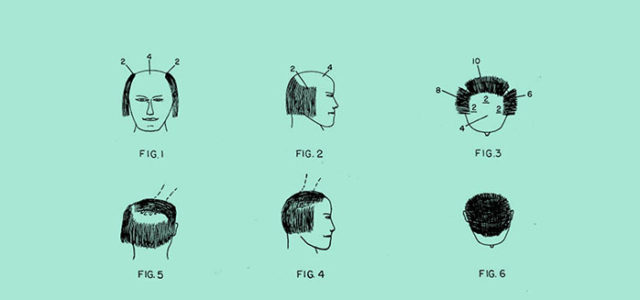In the era of big data, AI, machine learning and Bayesian statistics, why would we still need qualitative research? Actually, it may be more useful than ever.
Much of my work (though not all) is in marketing research, and I frequently interact with qualitative researchers and use their insights when designing studies, building statistical models and interpreting the results of my analyses. Many of my projects, in fact, have qualitative phases before and after the parts I am directly involved with. I am an eyewitness to the value of qualitative research.
John Creswell, pictured above, is a noted authority on qualitative research. Below are some passages taken from his popular book 30 Essential Skills for the Qualitative Researcher which summarize in some depth what qualitative research is and why it is used. (Unfortunately, I was unable to reproduce the boat picture he mentions.)
Any copy/paste and editing errors are mine.
“What is qualitative research, and when is it the best choice for a study? Various authors have enumerated the nature of this form of research, and I would like to present what I have used over the years as the major elements of this approach. At the heart of qualitative research is, I believe, a central phenomenon (or topic) we wish to explore.
This is the one central idea you would like to learn about or study in your project (your focus may move beyond this one idea as your project proceeds). Around this central phenomenon are arrayed several elements of the nature of qualitative research (presented in no specific order). About the central phenomenon we hope to:
Report the voices of participants. Qualitative research involves reporting how people talk about things, how they describe things, and how they see the world. This comes through in a qualitative study in terms of the quotations we see in published qualitative projects. It comes through individual perspectives. Through these quotations, we hear the voices of individuals – their personal views, their ways of talking, their takes on the situation.
Go out to the setting (or context) to collect data. Qualitative research involves going out to a setting and studying it firsthand. Thus, we are not only interested in how people talk about things, but we are also interested in how their particular setting or context shapes what they have to say. We are interested in the boats, the hills, the sun, and the sky. The context may be their families, their friends, their homes, their work, or many other contexts in which they live, work, or interact. Context or setting is very important in qualitative research.
Look at how processes unfold. In qualitative research, inquirers often study processes or what unfolds over time. These processes have steps, and one step comes before another. This study of process has a time element as well, so we need to follow what unfolds over a long period of time. A person might reflect on what happened during the day on a boat and how the boat was put to rest in the evening.
Focus in on a small number of people or sites. In qualitative research, we study a small number of people but go deep to develop the detail they provide to us. Rather than trying to apply conclusions from a small number of individuals to a large number, researchers study a small number of people who are, in and of themselves, of interest. If we studied a large number, we would lose the richness of learning from a few and lose the depth of understanding specific individuals. In the picture, we have one lake and a small number of boats.
Explore in an open-ended way. Qualitative research is exploratory research. We do not often know what questions to ask, what variables to measure, or what people to initially talk to. We are simply exploring a topic (later we will call it a central phenomenon) with some individuals (or organizations) we think will yield useful information. We are not trying to explain predetermined factors or specific relationships, because they may not hold true with the people we need to learn from. We might simply want to describe what it is like to sit and look at the boats in the evening.
Develop a complex understanding. The beauty of qualitative research is that it provides a complex understanding of a problem or situation. The more facets the researcher uncovers, the better; the more unpredictable aspects that surface, the better. We hear multiple voices from many participants, gather multiple perspectives, and develop multiple themes. In short, qualitative studies represent the complexity of a situation, a complexity that does often mirror that of real life. For example, in the boat picture, the glaring sun offsets the calm of the boats – a contrast that adds complexity.
Lift up the silenced voices of marginalized groups or populations. Qualitative research works best when studying people who have not often been studied. These may be individuals from diverse cultures, socioeconomic levels, racial groups, and gender orientations. For these groups, the traditional instruments, measures, and variables do not fit, because available research was developed on nonmarginalized groups of people. These groups often remain outside the mainstream of conventional research, and hence, we do not know much about them. The people who own and use the boats may be an understudied group.
Create multiple perspectives or views of the phenomenon. The best qualitative research shares information about themes drawn from multiple perspectives. I say, ‘report the good, the bad, and the ugly’ So, qualitative research is not a ‘Pollyanna’ perspective of hope and gratitude. Intermixed with these ideas would be the worries, concerns, setbacks, and dilemmas that are the very fabric of our lives.
When a theme is presented in a qualitative study, we hear about the many perspectives of individuals, individuals from different walks of life, age groups, geographic regions, genders, and so forth, that provide a rich mosaic of life. One theme from the boat picture might include the multiple perspectives of the ‘transitions’ of daily life for individuals, from busy fishing trips to the calm of the lake at night.
Contrast different views of the phenomenon. Qualitative research gives us the opportunity to contrast what is stated (e.g., organizational goals) with what is not stated (e.g., informal goals). When we talk to people we may obtain a different perspective than when we look at the formal structure of an organization. This contrast may lead to some useful observations or useful changes for organizations. This point again speaks to contrasts – the heat of the sun and the calm of the water, the one pole left unattended by a boat and fisherman.
Study sensitive topics. Qualitative research involves the study of emotionally charged topics that are hard to research. Because we talk directly to people and spend time in their settings, we may get them to talk about the ‘hard issues,’ the problems that typically do not surface in more conventional research. Qualitative research is known for addressing sensitive topics, hard-to-study topics, and topics close to the problems of individuals living in this complex world.
Thus, it takes a brave person to engage in qualitative research, to go out and confront individuals directly in open-ended interviews, and to wrestle with difficult topics to understand and embrace. We can see the emotions of calm, the uncertainty as to what the next day will bring, and the hope for better fishing tomorrow in the boat picture.
Reflect on our own biases and experiences. Qualitative researchers are self-conscious researchers, always reflecting on what they personally bring to a study. They realize that they bring their own cultures and backgrounds and that this shapes how they view the social world they see. Moreover, they are willing to talk about their backgrounds and their influence on their writing and their conceptualizations of their qualitative studies. This is being reflexive or positioning themselves in their studies. They are not passive observers of the study and in the background; instead, they are in the foreground and are present in the final writing product of a study.
Now that I have talked about what qualitative research is to me, it might be helpful to review some of the misconceptions people have of qualitative research. Sometimes people characterize qualitative research by one method of data collection – ‘It means hanging out by the fountain and observing.’ Or someone might say that qualitative research is ‘holding focus groups.’
Instead, I view qualitative research as incorporating many methods of data collection, using multiple methods, and drawing on the strength of each method to understand the problem at hand. Sometimes people characterize qualitative research as not rigorous or systematic – indeed, as not having a structure to the steps in the process of research.
Instead, qualitative research is a science in which we collect data to answer questions. It is also empirical in that we collect data. I see qualitative research as having steps in all phases of the research process, and qualitative researchers engage in these steps with as much systematic attention as in any other form of inquiry. The chapters in this book will hopefully attest to the rigour of qualitative research.
Some people think that qualitative research is too subjective and too interpretive. They are often referring to the open-ended nature of qualitative questions, which then permits the researcher to draw together the codes or themes that describe the responses. True, the qualitative researcher does need to make an interpretation of the data and to form themes in the data analysis steps.
But then the accuracy of this interpretation can be examined through the many validity checks the researcher could put into place. In the end, the researcher’s interpretation is often checked by the participants in a study and ultimately examined by the readers of the study.
Some people think that qualitative research is too expensive and too labour intensive to carry out. True, qualitative researchers stay in the ‘setting’ for long periods of time and conduct labour-intensive interviews and observations. To transcribe qualitative interviews, for instance, takes considerable time. To then analyze the transcriptions by going line for line again takes time. But the technology is now in place to help the qualitative researcher. Voice translation programs are available to use in addition to qualitative data analysis software programs. These tools will at least reduce the time required for the more labour-intensive phases of this form of research.”
Source: 30 Essential Skills for the Qualitative Researcher, John W. Creswell, SAGE Publications.
Article by channel:
Everything you need to know about Digital Transformation
The best articles, news and events direct to your inbox
Read more articles tagged: Featured, Marketing Analytics







